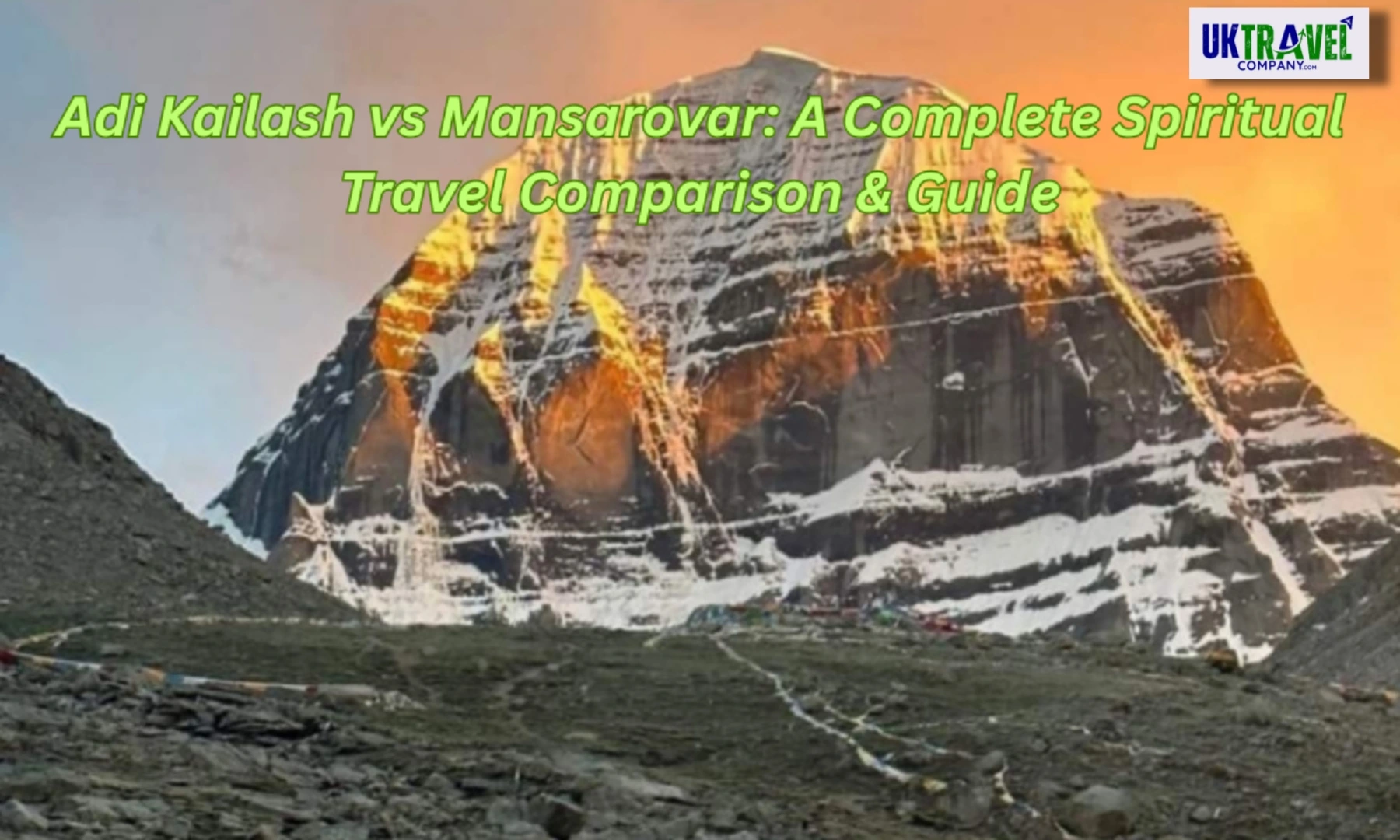Table of Contents
introduction
The majestic Himalayas are home to some of the world’s most sacred pilgrimages, with Adi Kailash vs Mansarovar and Mount Kailash Mansarovar standing out as two of the most spiritually significant destinations. Both hold immense religious value for Hindus, Buddhists, Jains, and followers of Tibetan Bon traditions. While they are often compared, each offers a unique experience—whether in terms of spiritual energy, travel difficulty, or cultural richness. Let’s dive into a detailed comparison to help you choose the right spiritual journey.
Spiritual Significance Adi Kailash & Mansarover
Adi Kailash (Chhota Kailash)
Adi Kailash, also known as Chhota Kailash, is located in the Pithoragarh quarter of Uttarakhand, India. Believed to be a godly replica of Mount Kailash in Tibet, Adi Kailash holds deep significance for those who can not take over the grueling trip to Mansarovar. Pilgrims believe a visit then grants blessings original to the Kailash Mansarovar Yatra.
Mount Kailash & Mansarovar
Mount Kailash, located in the Tibet Autonomous Region of China, is deified as the residence of Lord Shiva and Goddess Parvati. The sacred Lake Mansarovar, at the mountain’s base, is considered one of the holiest lakes in the world. A dip in its waters is said to cleanse sins and bring spiritual emancipation( Moksha).
Cost Comparison
| ExpenseAdi | Adi Kailash Yatra | Kailash Mansarover Yatra |
| Cost Range | ₹40,000 – ₹70,000 approx. | ₹1.5 Lakh – ₹2.5 Lakh approx. |
| Duration | 8–12 Days | 15-20 Days |
| Visa & Permits | Indian ID & permits from local authorities | Chinese visa, permits, and organized tours |
Scenic Beauty
- Adi Kailash: Offers a serene Himalayan landscape with lush valleys, the calm Parvati Sarovar, and Om Parvat (where natural snow patterns form the sacred ‘Om’ symbol).
- Mansarovar: A vast turquoise lake with stunning reflections of Mount Kailash, providing a surreal spiritual atmosphere.
Both destinations promise breathtaking natural beauty, but Mansarovar feels more remote and untouched, while Adi Kailash is more accessible for Indian travelers.
Religious & Cultural Experience
- Adi Kailash Yatra: The pilgrimage offers a deeply spiritual yet less-crowded experience, making it ideal for those seeking peace and devotion without the challenges of high-altitude treks.
- Kailash Mansarovar Yatra: This is considered one of the most sacred and spiritually rewarding pilgrimages in the world. The Kora (Parikrama) around Mount Kailash is believed to wash away lifetimes of sins.
Travel Difficulty and Accessibility
| Feature | Adi Kailash (India) | Mount Kailash Mansarover (Tibet) |
| Altitude | 5,945 m (Mount) but trek is relatively moderate | ~6,638 m (Mount) with high-altitude trekking |
| Accessibility | Easier, permits from Indian authorities only | Requires special permits & coordination with China |
| Best Season | May to October | May To September |
| Trek Difficulty | Moderate, suitable for most pilgrims | Challenging, requires high stamina |
| Location | Pithoragarh, Uttarakhand, India | Tibet Autonomous Region, China |
Explore Our Adi Kailash Om Parvat Yatra Packages
Which One Should You Choose?
Choose Adi Kailash Yatra if you:
- Want a spiritual journey without crossing borders
- Prefer moderate trekking and a shorter itinerary
- Seek a peaceful, less-commercialized experience
Choose Kailash Mansarovar Yatra if you:
- Are ready for a challenging high-altitude adventure
- Wish to experience the ultimate pilgrimage of global spiritual seekers
- Want to witness the mystical Lake Mansarovar and perform the Kailash Kora
Final Thoughts
Both Adi Kailash and Mount Kailash Mansarovar are sacred treasures of the Himalayas. Adi Kailash offers a divine experience within India, perfect for those unable to travel internationally. Meanwhile, Kailash Mansarovar is a once-in-a-lifetime spiritual quest that requires preparation and endurance.
No matter which path you choose, both journeys promise deep spiritual fulfillment, breathtaking Himalayan views, and a connection with divinity that lasts a lifetime.
FAQ: Adi Kailash vs Mansarovar
Q1.Which is easier to visit?
Adi Kailash is easier; Mansarovar needs more time, stamina, and a visa.
Q2. Are both equally holy?
Yes, both are sacred and deeply connected to Lord Shiva.
Q3.Best time to visit?
May to October is ideal for both pilgrimages.
Q4. How long does it take?
Adi Kailash: 8–12 days.
Mansarovar: 15–20 days.
Q5.Do I need permits?
Yes, Adi Kailash needs an Indian border permit; Mansarovar needs a Chinese visa.



